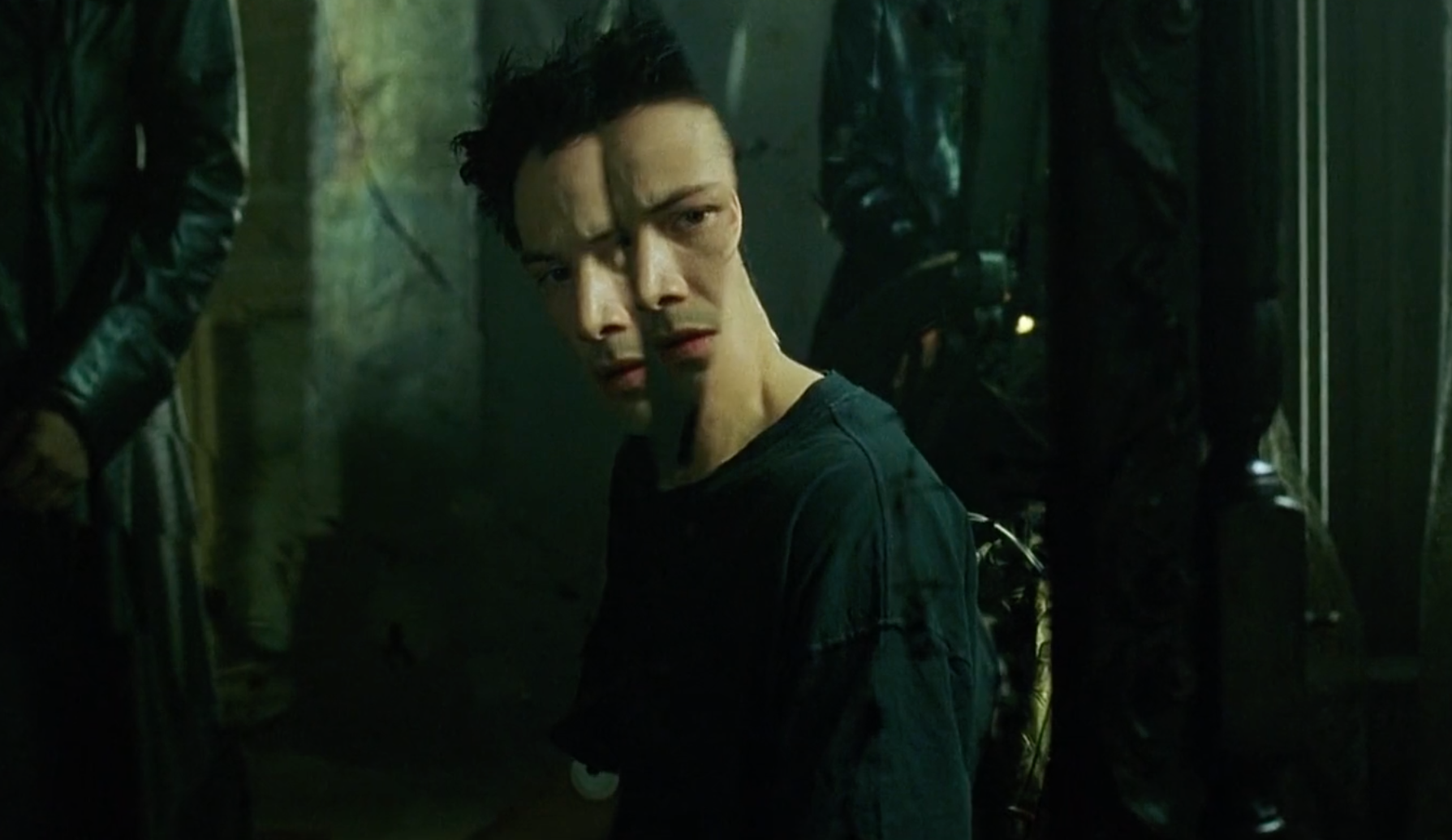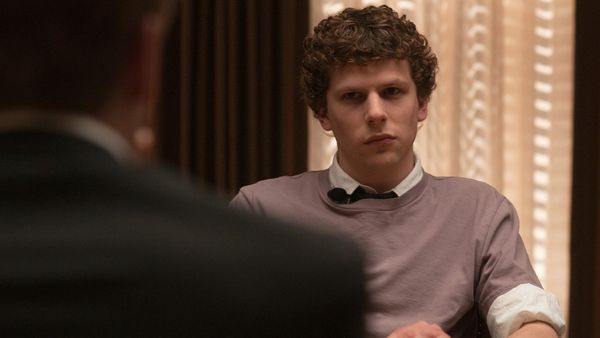The Matrix and The Vandalised Refraction
When Decartes said “I think therefore I am” we were yet to scandalise the atom. Yet to obliterate the very concert of truth. For Decartes, our internal mind produces the external world: if only he’d lived to see rumour and titillation delivered via the most miraculous triangles of glass and common metals, where even the notion of possible thoughts becomes undermined by the very architects of this reality.
Before his rebirth into the real, Neo retrieves a book from his shelf, Baudrillard’s Simulacra and Simulation. But this is not a book at all, rather a place to stash his illicit hacks and sweet, sweet benjamins. As unsubtle as a tangerine fascist undermining democracy itself.
Borges, the prolific short essayist, wrote of a fictional continent that attempted to build the most accurate map of their territory, and had to keep building larger and larger maps until they built a map the scale of the territory, and the empire collapsed under the weight of maintaining the territory and the map, leaving nothing but “tattered Fragments of the Map [that] are still to be found, Sheltering an occasional Beast or beggar”[1]. Baudrillard contends that reality is now just the scraps of the map rather than the territory [2]. That we live in the ruins of a perfect simulation of the territory. Fitting then that Baudrillard’s tome is hollowed out, filled with tools that Neo uses to subvert the systems of capitalism that ensnare and empower him at once. The very same tools that make him a suitable candidate to be introduced to The Desert of The Real.
Rumours suggest Baudrillard found The Matrix an embarrassing attempt at capturing his philosophy, aliking the film to the exact kind of film the Matrix would produce about the Matrix [2]. And so one of the greatest philosophers of the French postmodernists is not immune to legend supplanting the truth. The Matrix is built on similar suppositions. In the Desert of The Real, Morpheus admits no one quite knows what year it actually is. How long it has been since the machines took over. How many rotations of the sun have gone unseen after we supplanted Zeus and eradicated his entire sky.
The mind makes the Matrix real, and the mind is hard-wired for inequality ever since there was a stronger warrior, a smarter townsmen, a cannier gunslinger. And so the Matrix is filled with inequality’s screeching babe, twentieth century late stage capitalism. The humans rebelled against a utopia, says Agent Smith, a reliable narrator that can be trusted.
The mind makes the Matrix real. Injured in the Matrix? Injured in the real. Killed in the Matrix? You get it. This great, endless machine of ignorant suffering keeps us docile while the machines do whatever it is machines do. Compare javascript, probably. Morpheus is convinced Neo is The One: a prophesied messiah with the power to defeat the machines who can also stop bullets and fly in the Matrix. Mind over matter… computer matter, as it were. Yet this happens because The Oracle tells Neo he is not the one. “Being the one is a bit like love, you just know it” [3]. By the end of the film Neo is the one. Supermanning into the sky and all.
But The Oracle is a program, like Agent Smith. Even before her, it’s Morpheus’ interest and conviction that alert the agents to Neo in the first place. This interest confirms the convictions Morpheus is forming. This keen self-production of faith flashes into white hot relief as a small, bald Australian child tells Neo “do not try and bend the spoon, that’s impossible. Instead only try to realise the truth: there is no spoon. Then you’ll see that it is not the spoon that bends, it is only yourself” [3]. This self-reticulating loop of conviction, ignorance and confirmation bias produces The One.
Fitting that mirrors are everywhere in The Matrix.

Have you ever stopped to think about mirrors. Mirrors don’t just create an object but repeat what is observed. Neo’s empty book about simulations is a crime wallet. The red pill and blue pill glittering in Morpheus’ glasses. Agent Smith and Neo. Cypher and Agent Smith. Cypher and Morpheus. Morpheus and Neo. Seamless refractions, over and over, no point of origin, broken only when the machines rewrite the world, and even then, we barely notice because it’s all so stimulating. It’s no wonder we cannot look away: the birth and heat death of a million tiny deities in the palm of our hand.
We who slayed gods. Raged against the atom until she revealed our point of beginning. Ensnared by the heinous reflection of the territory while we rot in the tatters of the map. I’ve never stopped to think about mirrors. What violent delights they contain.
This essay was written as part of a collaboration with A Method To The Madness. I urge you to follow their content like I do.
Sources:
[1] Of Exactitude in Science (1975). L. Borges & A.B. Casares. Translation from A Universal History of Infamy, Penguin Books, London.
[2] Return to Source: Philosophy & The Matrix (2004). J Oreck. The worst website of all time, IMDB, refuses to provide the distributor or copyright holder unless I pay for premium and I’ll eat cat food before paying for a premium version of that disaster of a database.
[3] The Matrix (1999). The Wachowskis. Distributed by Warner Bros. Village Roadshow Distribution (for me here in Australia)
Additional Resources (video version, in order):
Video by Yaroslav Shuraev from Pexels: https://www.pexels.com/video/a-woman-behind-a-mirror-glass-panel-5978083/
Video by Kindel Media: https://www.pexels.com/video/astronaut-looking-at-galaxy-7649289/
Video by cottonbro studio from Pexels: https://www.pexels.com/video/man-house-sitting-apartment-4115331/
Video by Kelly : https://www.pexels.com/video/video-of-people-holding-banners-4764973/
Video by Kelly from Pexels: https://www.pexels.com/video/pretest-banner-in-the-street-6581009/
Video by Ton Souza from Pexels: https://www.pexels.com/video/a-man-looking-at-a-paper-printed-map-4507988/
Video by Alexander Bobrov from Pexels: https://www.pexels.com/video/forest-traveling-trees-historical-3962879/
Video by MART PRODUCTION from Pexels: https://www.pexels.com/video/priest-walking-on-temple-aisle-7218971/
Video by Carlos Arribas from Pexels: https://www.pexels.com/video/946147/
Video by Aljoscha Laschgari from Pexels: https://www.pexels.com/video/woman-holding-torches-1933732/
Music (video version, in order):
Elia Azarzar - The Road to Valhalla
Veaceslav Draganov - Neanderthal
Clubbed to death - The Matrix (Piano cover)



